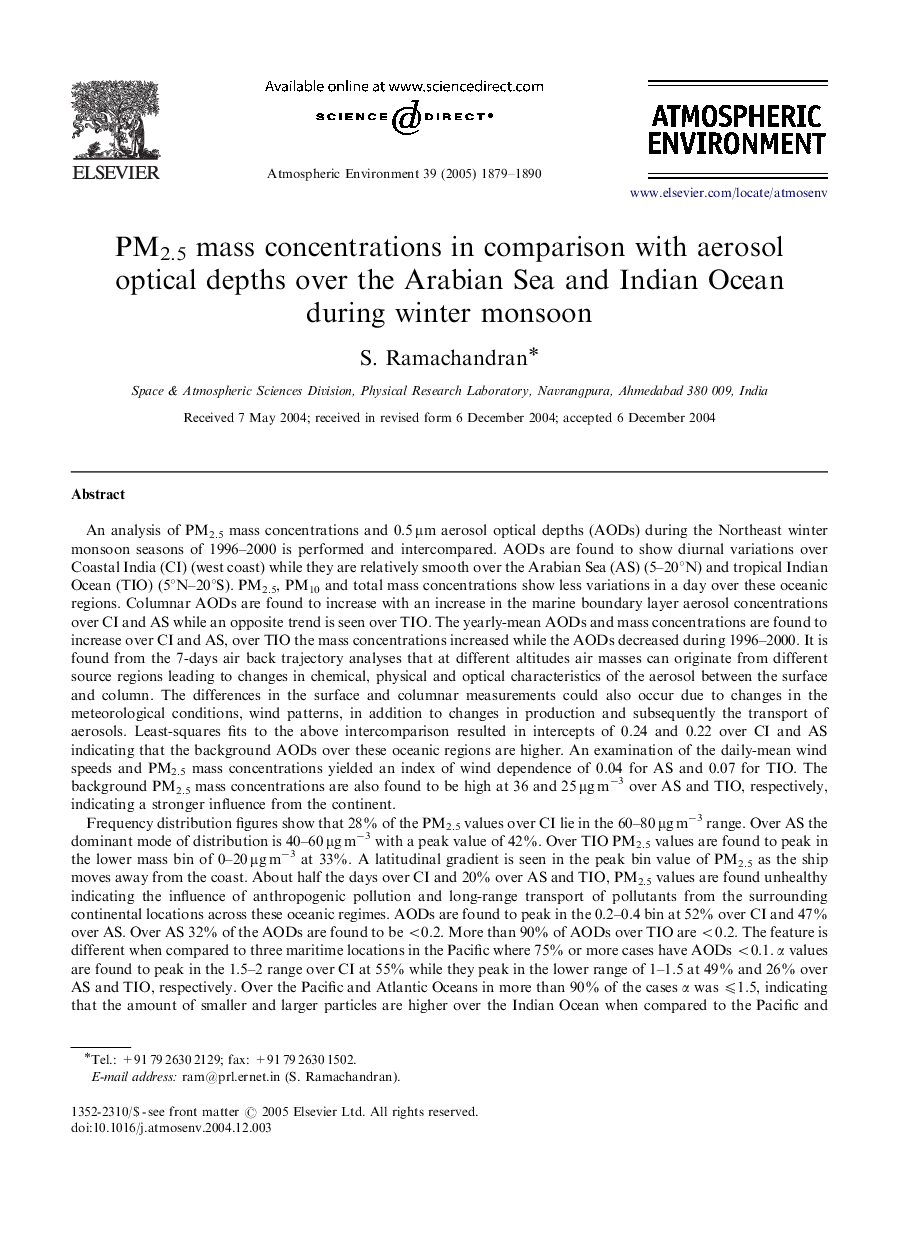| Article ID | Journal | Published Year | Pages | File Type |
|---|---|---|---|---|
| 9458826 | Atmospheric Environment | 2005 | 12 Pages |
Abstract
Frequency distribution figures show that 28% of the PM2.5 values over CI lie in the 60-80 μg mâ3 range. Over AS the dominant mode of distribution is 40-60 μg mâ3 with a peak value of 42%. Over TIO PM2.5 values are found to peak in the lower mass bin of 0-20 μg mâ3 at 33%. A latitudinal gradient is seen in the peak bin value of PM2.5 as the ship moves away from the coast. About half the days over CI and 20% over AS and TIO, PM2.5 values are found unhealthy indicating the influence of anthropogenic pollution and long-range transport of pollutants from the surrounding continental locations across these oceanic regimes. AODs are found to peak in the 0.2-0.4 bin at 52% over CI and 47% over AS. Over AS 32% of the AODs are found to be <0.2. More than 90% of AODs over TIO are <0.2. The feature is different when compared to three maritime locations in the Pacific where 75% or more cases have AODs <0.1. α values are found to peak in the 1.5-2 range over CI at 55% while they peak in the lower range of 1-1.5 at 49% and 26% over AS and TIO, respectively. Over the Pacific and Atlantic Oceans in more than 90% of the cases α was ⩽1.5, indicating that the amount of smaller and larger particles are higher over the Indian Ocean when compared to the Pacific and Atlantic. The spread in PM2.5 and AOD indicates that it is a challenging task to obtain a good relation without additional inputs on the vertical distribution of aerosols as varied kinds of aerosols from different source regions contribute at different heights over these oceanic regions.
Related Topics
Physical Sciences and Engineering
Earth and Planetary Sciences
Atmospheric Science
Authors
S. Ramachandran,
